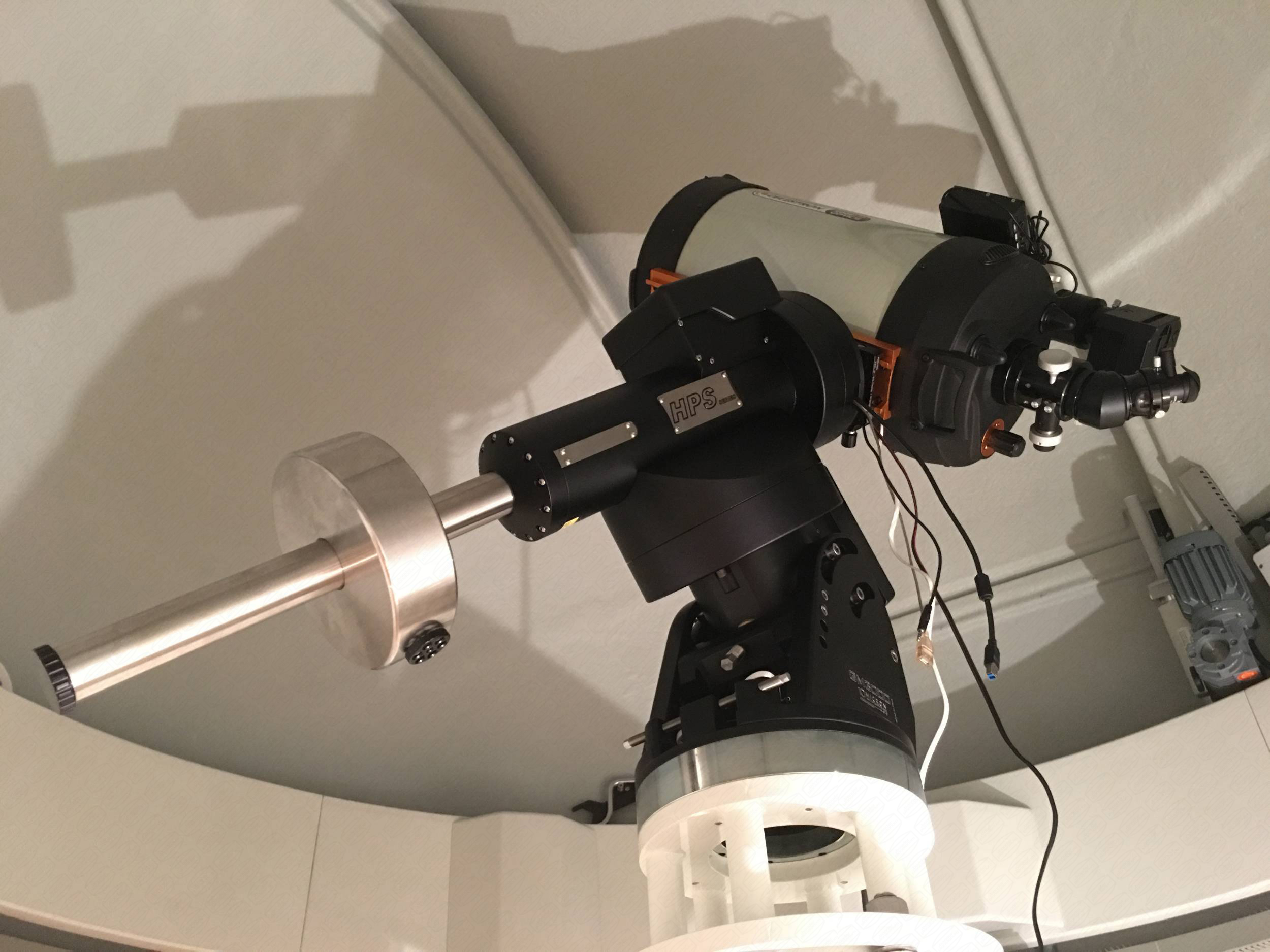The observatory is mainly used for deep-sky photography.
Last year I was able to show a considerable collection of deep-sky images at astrobin.com:
https://www.astrobin.com/users/equinoxx/
"The stability of the whole construction is remarkable. While observing with a Baader Microguide eyepiece on the C11, I touched the sand-filled column, knocked on it and leaned against it. Nothing could shake the image in the eyepiece!"
But just read on in the detailed reports about the observatory:
November 28, 2017:
Bilderbericht zur 2.6M Baader Classic Dome (ECO-Version) Privatsternwarte (only german language)
22. März 2018:
First Light: 2,6m Baader Classic Dome in Ingolstadt liefert die ersten Astrofotos/ (complete only in german language, mount related text translated below)
The construction of the observatory has been a dream come true for me. Once again, I would like to express my sincere thanks to all those involved.
...
A fundamental building block on the way to a model observatory is the GM 3000 HPS mount from 10micron. It takes over the control of the dome directly, without an additional PC, which is always aligned to the telescope in slave mode. The true dome position is provided by the built-in absolute encoders. Only the input of the telescope geometry was necessary during commissioning.
One of the outstanding features of the 10micron is the tracking in both axes. This not only compensates for polar alignment error, but also for atmospheric refraction and deflection in the axes. The atmospheric refraction calculation even includes temperature and barometric pressure. It is amazing how well the whole thing works.
Using Model Maker software, MaximDL and PinPoint Astrometry, I created a 30-star model. It's so really fun to watch in a relaxed way as the stars are automatically approached. After the acquisition and astrometry of each image, the software calculates the difference between the positions pointed to by the telescope and the mount respectively. At the end of the model acquisition, the data is transferred to the mount. In addition, instructions are given about the necessary corrections in azimuth and polar elevation. These instructions include the sense direction and the magnitude. For example, that the mount must be rotated clockwise by 0.04 turns with the azimuth adjustment screws. What a relief for the azimuth adjustment! With Model Maker, you get a precise measurement method and a correction recommendation all in one. After three iterations with 30 stars, the recommendation was 0.00 rotations in both azimuth and polar elevation. After a 6 h photo session, I added the first and last sub and was amazed that the stars were practically congruent!
I have sworn off guiding, the astrophotographic life has become easier. If I ever want to track a comet, I will simply update and use the comet database.
With only one counterweight, the 10micron GM 3000 HPS looks a little underpowered. At this point I simply follow my conviction: For astrophotography, a mount should be able to carry double or better triple the actual load. The GM 3000 HPS provides exceptional stability for my current instruments, the Celestron C11 EdgeHD and the Takahashi FSQ85. The octagonal Baader steel column makes an important contribution to this. The column is double-walled according to Zeiss modal analysis and is filled with sand. Mounted on a 3t concrete slab, this arrangement cannot be shaken.
Already during the construction I was allowed to draw from the wealth of experience of the dome builder. The result is two trades that are completely decoupled from each other. The dome with the substructure is suspended in the roof truss. If, for example, the wind acts on the dome with its large surface area, the walls cannot transfer any forces to the floor, on which the heavy concrete slab floats on a 9 cm thick layer of Styrodur.
The axis cross was placed exactly in the center of the dome. With the horizon flap open, the telescope can look bin to the southern horizon, over the Danube floodplains, deep into the south.
...
(translated Team Baader Planetarium)






